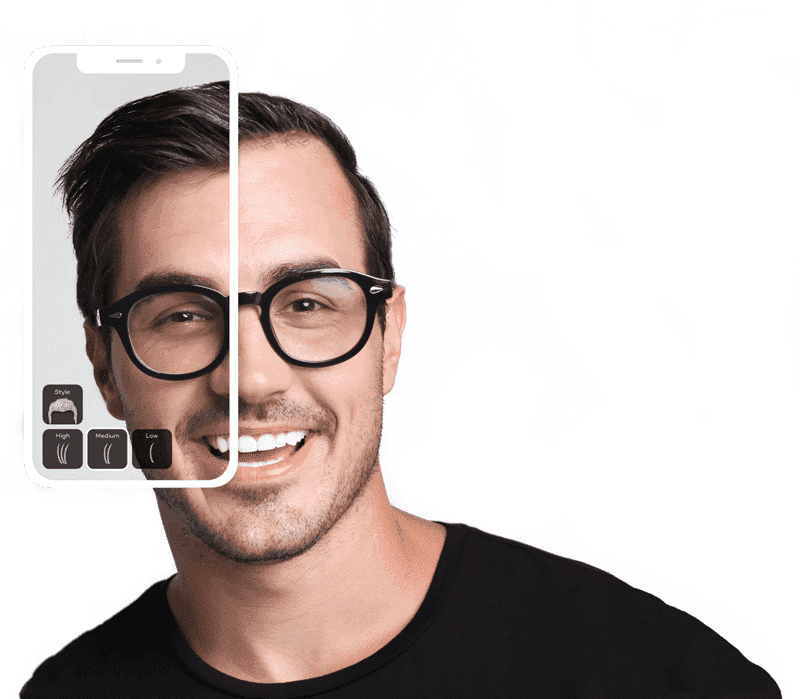Most men and women who have realistic expectations and understand the nature of hair restorative surgery are suitable candidates. There are factors that can determine if you’re a suitable candidate, e.g. available donor hair, medical conditions, your age and type of hair loss. Our experienced team can answer any questions you are unsure of, and tailor a suitable treatment plan for your specific case.
A one day hair transplant procedure will last between 3-7 hours, depending on the size of the area which needs to be covered. Regular breaks are offered during surgery, and we will also provide lunch for you on the day of your procedure. This arrangement makes it quite a pleasant experience for the patients whilst they sit back and enjoy a good film – there’s never a feeling of urgency at Westminster Medical Group.
We advise you to wear comfortable clothes, preferably a button-up shirt or wide neck top, so as not to dislodge your new hair grafts. We might provide you with a baseball cap after the procedure, if recommended by your surgeon. This might come in handy when going out in direct sunlight for 14 days following your procedure.
There’s minimal pain with hair transplant, just a little discomfort as with any minor surgical procedure. Local anaesthesia is always administered by our experienced doctors to minimise any pain. Most patients are pleasantly surprised, as they experience no great discomfort, and relax while the procedure is carried out. You can interact with our medical team during the procedure or even take a nap!
You’ll experience some redness in the recipient scalp area for up to 1-2 weeks following your procedure. The transplanted hairs will also scab over, which is a normal part of the healing process. The scabs should start to fall off naturally within the first few weeks after the procedure. You may also notice some hair shedding, which is a normal part of the hair growth cycle. Westminster Medical Group can offer dedicated hair washes to remove up to 90% of the visual effects of surgery by 5 – 7 days after your hair transplant procedure.
Very rarely some patients do experience a small amount of post-op swelling in the forehead, which then disappears over the course of 2-5 days. Using a cool, cold compress or ice pack can help reduce any possible swelling. Although pain is rare, you are allowed to take standard painkillers to tackle the feeling of tenderness for a few days post-op.
The aftercare for a hair transplant is relatively simple and pain free. Our medical team will advise you of your personalised hair care routine for the first few days of your recovery period. You will be given a WMG after-care package to take home with you including special spray, oil, shampoo, and detailed written instructions for upcoming weeks.
When the grafts are planted, the hair bulb tends to go into a temporary dormant phase before growing again at around 6 – 12 weeks. Some hairs will start growing immediately and others much later. At 6 months post-op, you can expect to see up to 50% of the final growth, with the full results observed at 12 months after the procedure.
It always depends on the area which needs to be covered, and your available donor hair. If you are taking hair loss medication to prevent further hair loss and have a reasonable area to cover, then achieving a full head of hair is certainly possible. If you are completely bald however, and have limited donor hair, then it is often beneficial to frame the face with a new hairline, transitioning it back to a lighter vertex and crown. Additionally, Scalp Micro Pigmentation can also be used in conjunction with a hair transplant to create the appearance of a fuller head of hair.
For FUE hair transplant surgery we use the state-of-the-art WAW FUE and UGraft Zeus hair transplant systems allowing greater quality control & donor hair management when performing FUE procedures. These systems boast many innovative attributes in FUE punch design, allowing superior performance and unmatched versatility to overcome the challenges commonly associated with FUE hair transplant surgery, including individuals with thick skin, curly hair and tightly-curled Afro-textured hair.
For FUT procedures we use an advanced suturing method called the trichophytic closure, which adds an additional step to the traditional closure technique in hair transplantation surgery. Rather than stitching the flaps back together, the skin along the upper edge of the strip harvest site is carefully trimmed before the two-layer donor closure is complete, which allows hairs to grow directly through the scar line once healed.


Book your free consultation with our expert hair surgeons directly.
Simply upload your photo below to discover if you’re a good candidate.

You’ll discover…
✅ Essential tips for hair care in the early recovery stages
✅ Must-know facts about hair shedding and growth cycles
✅ Transplant procedure costs
✅ How to handle work and social interactions after your procedure